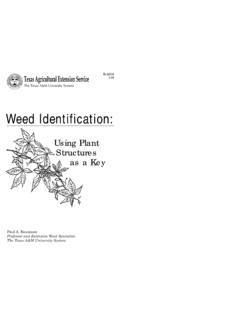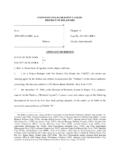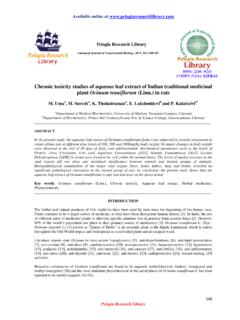Transcription of WHITE BOOK SAFFRON - European Saffron
1 WHITE BOOKSAFFRONin EuropeProblems and Strategies for improving the quality and strengthen competitiveness Table of ConTenTsVIIT able of ConTenTs1 Preface 52 Documentation 133 objectives General objeCTive sPeCifiC objeCTives 174 referenCe fraMeWorK SAFFRON CulTivaTion Traditional SAFFRON cultivation Production cycles and periods 23 Soil preparation for SAFFRON planting Planting Irrigation Fertilization Weed eradication Phytosanitary protection Harvesting Yield Bulb harvesting Mechanization of SAFFRON cultivation in the field Bulb planting Cleaning, sorting and disinfection of bulbs Bulb grubbing Harvesting of SAFFRON flowers Forced cultivation of SAFFRON Bulb production in the field Cultivation in storage rooms under controlled microclimatic conditions Cultivation in macrotunnels or greenhouse tunnels SAFFRON TreaTMenT Separation Drying SAFFRON cleaning CoMMerCializaTion: sToraGe anD PaCKaGinG Purchase Sorting Storage Cleaning and homogenization Packaging Package material and presentation Packaging process Shipment Commercialization costs QualiTY DeTerMinaTion Endogenous parameters Exogenous parameters Techniques of adulteration determinations.
2 TCL, HPLC, microscopic analysis Insecticide residue identification method Microbiological analysis method SAFFRON ConsuMPTion Forms of consumption Consumption per region 505 siTuaTion analYsis CulTural TraDiTion HuMan resourCes ProDuCTion sYsTeMs anD CulTivaTion TeCHniQues ECHANIZATION OF CULTIVATION iMProveMenT of THe sTiGMa seParaTion ConDiTions ProDuCTion of bulbs HYGieniC anD saniTarY ProbleMs ProDuCTion evoluTion CoMMerCializaTion Producer price Lack of differentiation International Market European seCTor sWoT analYsis Strengths Weaknesses Opportunities Threats 666 sTraTeGiG Plan: innovaTive soluTions objeCTives ProMoTion of aGriCulTural ProDuCTion Mechanization of cultivation Direct support to producers Services cooperatives Organic cultivation Cooperative cultivations Irrigation of cultivation Promotion of bulb production Protected cultivation Improvement of separation conditions fooD inDusTrY Best practices in health sector Hazard analysis and critical control points Improvement of storage conditions iMProveMenT of sToraGe ConDiTions Offering improved quality products Traceability Services of laboratory analysis and quality analysis researCH.
3 TraininG anD KnoWleDGe Transfer Promotion of applied research Training and information for producers Technical support and consulting for producers European research center for SAFFRON product and byproduct use CoMMerCializaTion Reinforcement of commercialization Cultivators and processors Internationalization of enterprises Differentiation Brand names Development perspectives of the SAFFRON sector in the European and international market neW WaYs of use anD neW aCTiviTies New products Rural tourism Inter-professional organization in the SAFFRON sector SAFFRON promotion center Technical bureau of SAFFRON 897 ConClusions 95a1 reGional SAFFRON CulTivaTion anD HarvesTinG TeCHniQues in sPain, GreeCe anD iTalY eColoGY of SAFFRON CulTivaTion Climatologic conditions Edaphic conditions 100 PrefaCeSaffron flowers (S.)
4 Gavino Monreale) PrefaCeINTERREG IIIC is a European Com-munity program, aiming to strength-en the economic and social cohesion among European regions, through cross-border, transnational and in-terregional cooperation. It promotes information and empirical knowledge exchange by encouraging partnerships, mainly in the sector of regional devel-opment. The SAFFRON project is a part of the INTERREG IIIC program engulfing regional authorities and other institu-tions of the three largest European Re-gions specialized in the production and commercialization of SAFFRON (Crocus sativus): Castile- La Mancha (Spain), Sardinia (Italy) and Western Macedo-nia (Greece). The technical team, men-tioned in detail herein, has jointed its efforts during one year to produce an annual detailed analysis regarding the European production and commerciali-zation of SAFFRON .
5 The project has suc-cessfully fulfilled its transformation to a meeting forum of all competent au-thorities and has enabled a reliable de-scription of the current situation based on all information presented in the pro-gram. The WHITE book of the European SAFFRON accumulates all information and knowledge supported by the IN-TERREG IIIC program and aspires to become the map that describes the Eu- SAFFRON flowers (Corongiu) ropean SAFFRON landscape for the years to come. The applied means as well as all efforts made, will help establish and raise the competitiveness of the European SAFFRON by adjusting it to the new consumption habits as well as to important socioeconomic changes imposed by the globali-zation of markets. Thus, the WHITE book describes the actual situation and offers an in-depth evaluation of strengths and weaknesses of the SAFFRON sector.
6 It proposes also a strategy plan on the basis of five priority objectives: framework and infrastructure of agricultural production agricultural production industry product differentiation, quality control and safety further training, research and transfer of technology commercializa-tion and use. Furthermore, direct priority measures are proposed regard-ing the urgency of the strategy plan implementation. The WHITE book uses a simple language, enabling all readers to ob-tain a clear picture of all issues involved. The book has been divided in six sections: documentation, objectives, reference framework, diagnos-tics, strategic plan and conclusions. The Annex, attached at the end of the book , includes detailed information regarding cultivation, process-ing, storage and packaging, quality controls and commercialization in all three European regions mentioned above.
7 Our analysis and conclusions are based on the working-out of the above detailed information. Conclusively we hope that the WHITE book of the European SAFFRON will become a reference, enabling production enterprises as well as retail-ers to raise their competitiveness by applying innovations. Furthermore, it will help regional, national and European public authorities to plan efficient development policies and research support. The WHITE book aspires to become in the long run the basis of a veritable centre of the European SAFFRON . Its goal is to establish European SAFFRON on a global market level by outlining its high and consistent quality. ParTiCiPaTinG orGanizaTionssPainGreeCeiT alYiT aPTechnical Institute for AgricultureAvenida Gregorio Arcos s/n02080 Albacete Region of Western Macedonia EP Kozani50100 Regional Organisation for Agricultural Development and Technical SupportVia Caprera 809123 Cagliari of Castilla La ManchaTechnical school for agricultural engineeringAvenida de Espana s/n02071 University of AthensIera Odos 7511855 ParTiCiPanTs in THe eDiTinG of THe WHITE book naMeinsTiTuTionalonso D az-MarTa, Gonzalo Lu sUCLMarGHiTTu, AntonelloERSATasTraKa, KonstantinaAUAbeTza, TommasoERSATCaMba, ElisabettaERSATCa aDas sanCHez, WenceslaoITAPCarMona DelGaDo, ManuelUCLMC illoCo, Maria TeresaERSATC orona, JessicaERSATC urreli, MassimilianoERSATD aferera, DimitraAUADe juan valero, ArturoUCLM fallas, YannisRMOfenza.
8 GuidoERSAT floris, IgnazioERSAT ibba, GianniERSAT ibba, MariaERSATGarC a l Pez De roDas, EvaUCLMG arriDo GarCia, M Jos ITAP GKouTzios, VasilisRMOKanaKis, CharalabosAUAlaConi, RiccardoERSAT leouDis, AndreasRMOl Pez C rColes, HoracioITAPl Pez fusTer, PrudencioITAP lusso, GiuseppeERSATManConi, MarcellaERSATM arras, WilliamsERSAT Mulas, GiampaoloERSATMurGia, GiustinoERSAT onnis, Maria VivianaERSATPeDDis, RobertoERSATPes, IsabellaERSATPiCornell buenDia, RaquelUCLMP inna, Maria ElisaERSATP irasTu, AugustoERSATP irisi, Antonio EnricoERSATP olissiou, Moschos GAUAPoDDa SandroERSATraKiTzis, KostasRMOreMounDos, PanosRMOroMero Del reY, M Jos ITAP sajarDo luCas, TeresaUCLM- ITAPsanCHez GoMez, Ana MariaUCLM salinas fernanDez, RosarioUCLM sanna, FrancescoERSAT sanna, StefanoERSATsaTTa, BrunoERSAT selis, ToninoERSATT aranTilis, Petros , MassimilianoERSAT zalaCain araMburu, AmayaUCLM10eXTernal eXPerTs naMeinsTiTuTionaDDress aMor CHiCo, Jos IgnacioUniversity of Alcal de HenaresCampus UniversitarioCrta.
9 Madrid-Barcelona, km. Alcal de HenaresMadrid (SPAIN)GKola, RitaASKK Compulsory Cooperatives of SAFFRON - KrokosEvripidou 1, KROKOS, 50010 (GR ECE)Kaliva, EleniCooperative KrokosEvripidou 1, KROKOS, 50010 (GR ECE)orTeGa ri-Poll, RafaelSOIVREA venida de Elche 161 (Estaci n TIR) 03008 Alicante (SPAIN))PaTsiouras, NikosCooperative KrokosEvripidou 1, KROKOS, 50010 (GR ECE)roDr Guez roDr Guez, ElizabethIDETRA, , 48, 3o Madrid (SPAIN)sirera Mar-T nez,SandraVerd -Cant SAFFRON - SpainSargento Navarro, 7 - 03660 NOVELDA (Alicante) SPAIN valero Ga-nau, MiguelGeneral Company of MarioUniversity of Sassari Department for plant pro-tection (plant pathologies)Via dell Universit , 2107100 Sassari (ITALY)PasCHino, FrancescoUniversity of SassariDepartment of Terri-tory EngineeringVia Enrico de Nicola 07100 Sassari (ITALY)
10 PiTzalis, PaoloChemical Laboratory of products of the Chamber of Commerce and Industry of CagliariiVia Emilio Segre zona idustriale, 09132 Elmas,Cagliari (ITALY) DoCuMenTaTionSaffron flowers (ALTEA)13 DoCuMenTaTionEurope has played always a significant role in the international production and commercialization of SAFFRON . The cultivation of SAFFRON has a very long tradition in the Mediterranean basin, as thousand-year-old archeological monuments remind us. Nowadays SAFFRON production faces a crisis but all nations involved are traditionally related to SAFFRON cultivation and preserve it cultivation methods are almost unchanged during the last centuries and the need in labor force is high due to low mechanization of the Mediterranean basin the production of SAFFRON has been decreased due to rising standards of living and, inevitably, due to the rise of labor costs.





